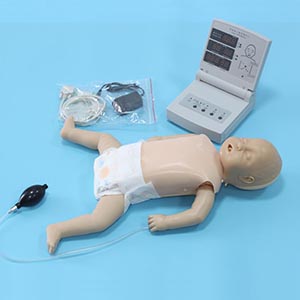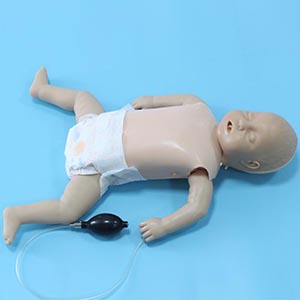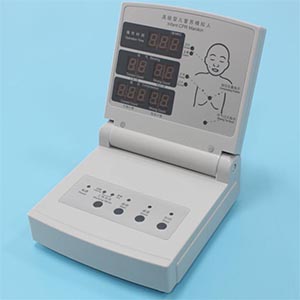Homepageпјҡ NEWS >> Why is the advanced infant Integrated First Aid training simulator considered as a key device to improve first aid capabilities?
In modern medical training, the mastery of first aid skills is very important to improve the ability of clinical emergency response. Especially in the field of infant first aid, the difficulty and complexity of first aid operation are higher because of the significant difference between the physiological characteristics of infants and adults. Therefore, as an advanced training equipment, ** Advanced infant integrated first aid training simulator ** has become a key tool to improve first aid ability by virtue of its high simulation and versatility.
1. High degree of imitation, simulate the real first aid scene

Infant Integrated First Aid training simulator
The advanced infant comprehensive first aid training simulator adopts a design that accurately simulates the physiological characteristics of infants, which can reproduce the vital signs such as heartbeat, breathing, body temperature and pulse of infants, and even simulate the different physiological reactions of infants in the process of first aid. For example, when performing infant cardiopulmonary resuscitation (CPR), simulators can accurately respond to the difference between a correct rescue and a wrong operation, helping students understand operational details and emergency judgment. The trainer can experience and master every step and technique in infant first aid in a risk-free environment.
2. Real-time feedback and data support to improve training effect
Unlike traditional training methods, the Advanced Infant Integrated First Aid training simulator provides real-time feedback to ensure that participants understand their own effectiveness when performing first aid operations. For example, in airway management, simulators can feedback whether the trainees are correctly intubated through airway response, respiratory rate and other data. Real-time data not only helps students adjust their operations in a timely manner, but also provides a quantifiable evaluation basis for training. The research shows that using this simulator in first aid training can significantly improve the operation accuracy and reaction speed of the trainees.
3. Simulate a variety of first aid scenarios to improve emergency decision-making ability

Advanced infant integrated first aid training simulators can not only simulate common first aid situations, such as infant suffocation, cardiac arrest, allergic reactions, etc., but also simulate complex multi-critical emergencies. For example, trainees can cope with complications such as infant trauma, respiratory failure and shock at the same time, which provides an effective training platform for improving emergency decision making and rapid response capabilities of first responders in real environments. Through repeated training, students are better able to cope with first aid tasks in high-pressure environments and reduce errors.
4. Improve teamwork and communication skills
First aid is not just an individual effort, especially in infant first aid, which often requires the collaboration of multiple medical staff. The advanced infant integrated first aid training simulator supports multiple people to participate in the training at the same time to help students improve their teamwork ability. By simulating real situations, students can practice how to collaborate, communicate effectively, and maintain clear thinking under pressure. Coordination and communication between teams is critical to the success of first aid, and this simulator provides an ideal platform for training.
5. Reduce medical errors and improve clinical confidence

In clinical first aid, mistakes can have serious consequences. By using the Advanced Infant Integrated First Aid training simulator, medical staff are able to practice repeatedly in a simulated environment and gradually build confidence and proficiency in first aid operations. Simulation equipment can help students identify their own weaknesses and improve, to avoid the actual first aid due to improper operation of the baby's illness or other complications. Continuous practice and feedback also helps to improve students' clinical emergency response ability and reduce medical errors.
6. In line with the trend of modern medical education, improve the quality of training
With the continuous development of medical education, traditional theoretical learning and dead animal model have gradually failed to meet the needs of first aid training. The advanced infant Integrated First Aid training Simulator combines the latest medical technology and educational concepts, and through immersive experiential learning, it can not only improve the technical level of students, but also cultivate their comprehensive judgment and emergency handling abilities. With the help of high simulation equipment, students can get comprehensive skills training in a near-real situation, ensuring that they can better serve patients in future practical work.
Conclusion
The advanced infant comprehensive first aid training simulator has become the key equipment to improve the first aid ability through its characteristics of high simulation, real-time feedback and multi-scene simulation. It not only helps medical staff improve their infant first aid skills, but also cultivates students' emergency decision-making and teamwork skills in stressful situations. As medical education moves towards greater intelligence and precision, such simulators will undoubtedly play a greater role in the future of first aid training.